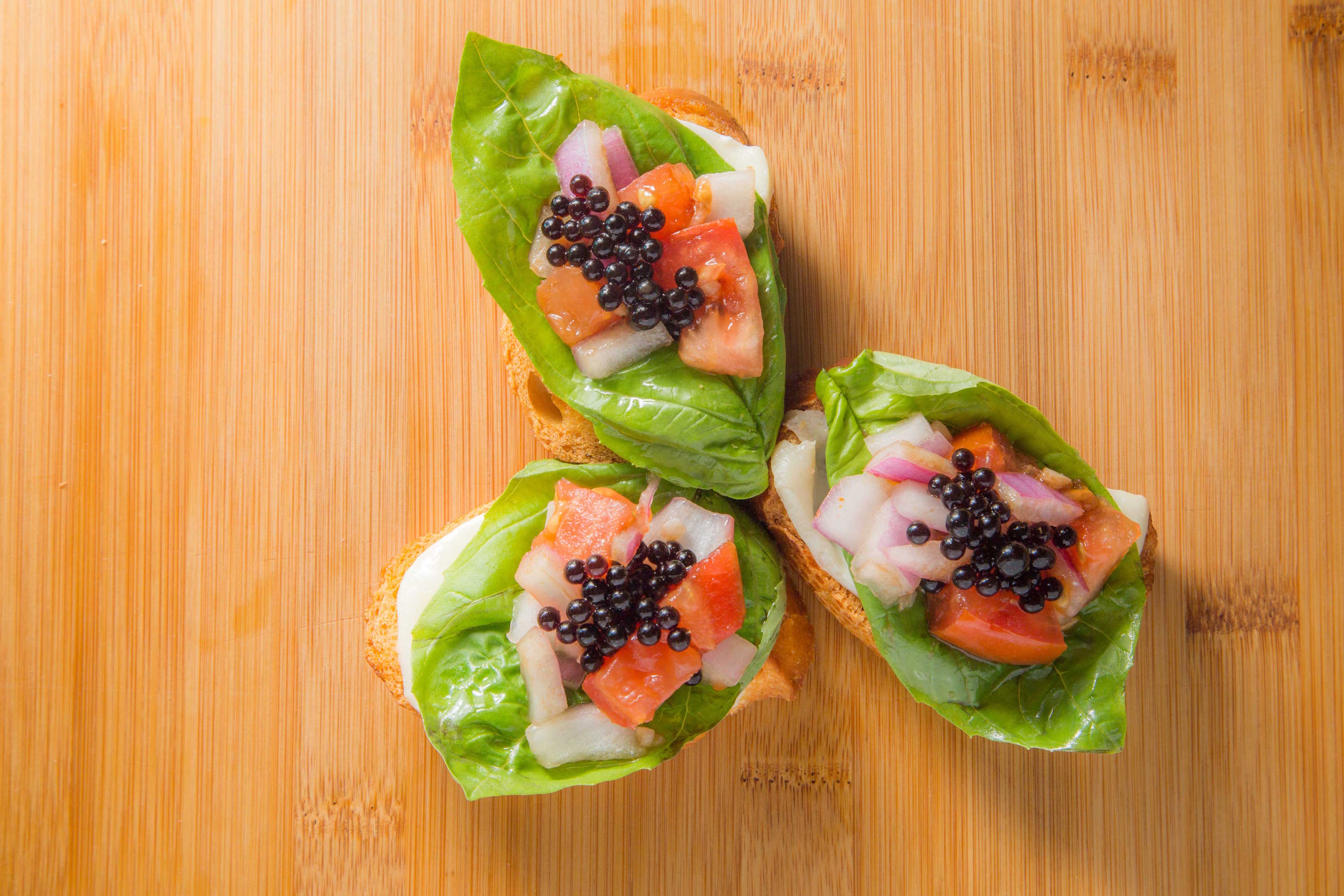
Molecular gastronomy — also known as multi-sensory cooking, modernist cuisine, culinary physics, and experimental cuisine — has led to many innovative dining experiences.

This study of the chemical transformation of the tastes and textures of food through cooking has a chef-centric approach instead of a science-centric approach, which makes it more useful to the everyday cook. Understanding even the basic interactions between common ingredients can lead to more consistent and successful cooking.
One recently popular process is spherification, which creates small gel spheres resembling caviar that pop with flavor when eaten.
Traditional spherification uses sodium alginate and calcium to create delicate molecular droplets, but in this project we will employ a much simpler technique using agar and cooled oil. You can imagine agar like gelatin, which is liquid at high temperatures but solidifies when cooled. We take advantage of this property by dripping the hot mixture into cold oil so that it forms a gelatinous sphere as it rapidly cools. These “caviar” can then be added in place of a traditional splash of balsamic for a fun textural treat!














